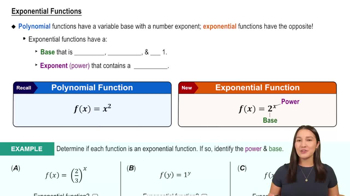Even and Odd Functions
In Exercises 47–62, say whether the function is even, odd, or neither. Give reasons for your answer.
sin x²
 Verified step by step guidance
Verified step by step guidance Verified video answer for a similar problem:
Verified video answer for a similar problem:



 5:57m
5:57mMaster Graphs of Common Functions with a bite sized video explanation from Patrick
Start learning